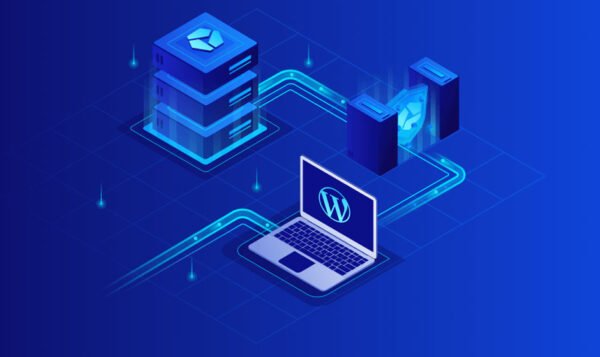Why Should You [Still] Choose Ruby on Rails for Your Product Development?
![Why Should You [Still] Choose Ruby on Rails for Your Product Development?](https://lucykingdom.com/wp-content/uploads/2023/10/Why-Should-You-Still-Choose-Ruby-on-Rails-for-Your-Product-Development.jpg)
Ruby on Rails has come a long way since its inception 18 years ago. Despite skepticism about Ruby on Rails’ sustained popularity and effectiveness, it is still extensively used. Rails first emerged as a hero in the realm of web application development.
Although it is the most ancient framework, ROR development company still find merit in using it. You may be curious about the widespread acceptance of Ruby on Rails. If so, you’ve found the right place, as we will be discussing the most compelling arguments for why your company should embrace RoR.
Reasons why Ruby on Rails is still a good option?
- Rapid Simulation
One of Rails’ strongest points is how quickly iterations can be made between idea and prototype. You can rapidly develop boilerplate code and release an MVP by adhering to Rails’ conventions and prescriptions. Facilitates rapid client feedback and idea verification.
Agile development relies heavily on short iteration periods. Rails streamline the process of responding to new requirements and improving existing ones. This allows startups to continually improve their products and is especially useful for them as they grow.
- Efficiency in Computer Code
Developers may save time and effort using Ruby on Rails. Rails’ Model–View–Controller (MVC) architecture and emphasis on “Don’t Repeat Yourself” (DRY) allow for rapid feature development. Rails’ extensive community of open-source frameworks and tools further contribute to the platform’s productivity benefits.
A developer may save the hassle of building from scratch by opting for an existing “gem” that serves their purpose. The size of the Rails community is a major factor in how quickly issues may be resolved. Any problem you encounter has probably been solved before, and the information you need is readily available.
- Reduced Development Expenditures
The entire engineering cost of the Rails platform is lower than that of competing systems due to the efficiency of Rails developers. Startups may deploy products and produce MVPs despite having fewer teams and lower budgets. With so many skilled Ruby developers available, companies can keep pay rates low.
When there is a huge talent pool from which to choose, growing or shrinking teams is simple. Since Rails is freely available open source software, you may utilize it without cost. When combined, these qualities greatly reduce expenditures during product creation.
- Transition into a New Environment
In order to meet the needs of new businesses, Rails was created. The framework prioritizes efficiency and usability above pinpoint accuracy.
It stays out of the way, allowing businesses to try new things and adjust their strategies as needed. The principles of agile, lean, and MVP development are all consistent with the Rails way of thinking. This makes it a great fit for the fast-paced nature of startup operations.
- Security
All software intended for general use must be designed with safety in mind. Inherent in Ruby on Rails are sound security procedures and configurations. To prevent common threats like XSS, CSRF, and SQL injection, Rails sanitizes input and escapes output.
Data encryption and session control are two methods that may be used to protect private data. The Rails core team is responsive to security vulnerabilities and works rapidly to fix them. In general, Rails allows programmers to construct reliable, standard-compliant apps.
- Scalability
Ruby on Rails can handle massive amounts of traffic and data with ease. Optimizing techniques like as caching, background processing, and database partitioning allow Rails applications to scale with high demand. Many businesses have found great success using Rails applications.
Rails’ scalability in the real world is shown by their widely used websites and apps. Rails is well-suited for deployment in cloud environments. It can scale and is prepared for use on cloud services such as AWS, Google Cloud, and Heroku.
- Advanced Technology
After more than 15 years in the industry, Rails has shown itself to be a reliable framework. The longevity of rails is a testament to the superiority of both its technical design and its practical use. The framework is continuously improved and updated, and it is now in its eighth major version.
You may be certain that your investment in Rails will be in a technology that will be around for quite some time. Rails, on the other hand, isn’t bound by its predecessors in any significant sense. Codebase has undergone many refactoring in an effort to reduce its level of complexity.
- Simple Deployments
Rails’ ecosystems of deployment tools simplify the process of releasing new software. Heroku makes application deployment a snap with the help of git push deploy.
Capistrano may be used to automate the deployment and rollback procedures on remote servers. To do deployments with little to no downtime, you may combine Capistrano with additional CI tools like GitHub Actions.
Hire Ruby on Rails experts that can take charge of your project from start to finish. Quick and painless rollouts free up resources that can be better used toward enhancing the product’s features.
Conclusion
Ruby on Rails is still a solid platform for developing websites in 2023. Because of its robust open source community, this framework is continuously refined.
Rails facilitate the rapid prototyping, development, and shipping of high-quality products by ROR development company of all sizes. It’s a full-featured framework for developing and deploying large-scale online applications. Rails allow startups to easily test and refine their products with little overhead.
Finding new personnel is easy since there is no shortage of skilled applicants. Even as the firm grows, Rails will be able to support the technical team and codebase. Ruby on Rails has been proven by the thousands of thriving ROR development company that use it.



